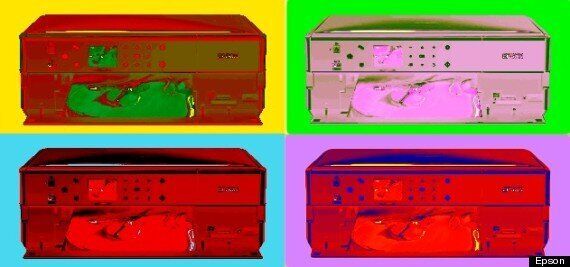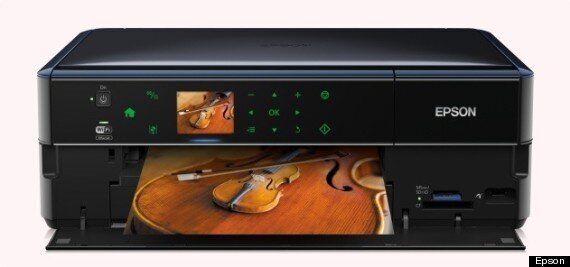
When you think of a company known primarily for mass producing printers, you don't often think of fine craftsmanship.
In recent years, printers have become seen as the ultimate 'stack 'em high, sell 'em cheap' product, which - often due to the high price of ink cartridges - customers come to quietly resent rather than adore after purchase.
So when Minoru Usui, CEO of Seiko Epson, began a recent keynote at the IFA conference in Berlin with a description of "monozukuri", a Japanese term meaning 'the art and science of manufacturing', it caught some off guard.
But for Epson, which this year is celebrating its 70th birthday, it really is possible to think about making printers as an art.
The company, which now employs more than 70,000 people, holds 50,000 live patents and has annual sales above $10bn, began as a small watchmaking factory in the mountainous centre of Japan, and its CEO still sees that legacy in the products it makes today.
In an interview conducted through a translator, he explained that printers really are more complex than they look.

Above: Epson CEO Minoru Usui
"Epson started as a watch company and watches are extremely small, complex pieces of equipment," Mr Usui said.
"Epson's craftsmanship developed form there. However, as the company changed over the years we moved into printers, but transferred many of the components from watchmaking into our printer components. So for example, the print head, which is the core part of a printer, that takes a lot of craftsmanship to produce. The moulds that we use to create our watch components, they also use the craftsmanship that originally came from watches. "
Mr Usui said about 150 people in the printer business are employed to carry out this fine craftsmanship at Epson, and added that 100 more still make watches for the company.

Above: The Epson Stylus PX730WD, its top-of-the-range all-in-one
And all of Epson's Japanese employees, regardless of their actual job, learn to take apart and assemble printers and watches when they join the company.
"The new employees have lots of ideas, great ideas about what products we want to make and that's fine," Usui said. "However it's extremely important for them to understand what is practical - and how to make things.
"Without that kind of training it's difficult to understand how to make something in a practical way."
Of course Epson has been making printers for a long time, and while Usui says the company is still focused on making better models - its recent line are 40% smaller, and better for the environment, he said - he is also aware the market isn't growing enough to sustain the company indefinitely.
"Nobody gets excited about a product like printers that, to a certain level, anybody can make," he admits. "We have to get over that stage, and take on new challenges to promote new value."

Above: Epson's Moverio Video Glasses
So what is Epson building, other than printers and projectors?
Actually, a surprising amount. The company has branched out into making wearable GPS-enabled running monitors and exercise products, as well as products in the health and medicine market. It is also looking tentatively at 3D printing and other on-demand manufacturing tech which can be sold to industries around the world.
Occasionally, the results of Epson's push to innovate can often seem a bit hurried. Take the Moverio, a slightly mad but intriguing idea to take two of Epson's high-quality projectors, shrink them down and build them into a pair of glasses.
The idea was to create one of the first sets of truly HD video headsets, for use with media as well as normal computing. Epson imagines engineers working as schematics are projected in front of their eyes. Other companies have tried and failed to market such a product, and there are new attempts on the horizon by Sony and Google - and, in truth, even Epson's cool but chunky product feels more like a public-release beta than a finished article.
As CEO, when Mr Usui looks at the Moverio, does he see more to fix and more improvements to make than when he looks at a printer?
"This product has some completely new optical components," he said. "We had to design them, as nobody else has come across them before," he said. "To come up with the idea for the product is easy but to put it into shape and make it suitable for sale is extremely difficult. What we think we bring with this is not only the concept but the ability to bring it into reality."
"Once you make the first one then you start to see the next level, and the new possibilities. We're working hard to make the next generation which is going to be much smaller, much more compact, much more beautiful in design, lighter, and it's the whole process of continual improvement that makes that possible."
It is possible to see Epson's effort to build new, wearable products as the company which started by making watches, coming full-circle?
"When we look at trends in society, the PC is very much going to the wearable area," Usui said. "So when we were thinking about what the next stage of our company is we looked at the technologies we have, which are company and energy saving, and together with the know how about watch-making and printers we definitely saw a link.
In reality, Epson is going to remain primarily a printer and projector maker for some time, Usui admits. But he takes the challenge of building new products, and honing its current lines, equallyy seriously.
"The new wearable business won't get big quickly," he admits. "It's not going to be a major part of our business in the very near future. So at the same time as building up these new businesses it's very important for us to stabilise our existing business.
"But in the future it's very important for us to keep focusing on our research and development. I believe Epson is a company that has the ability to create concepts and make them real. This cycle of improving technology is what we can do to achieve that."
